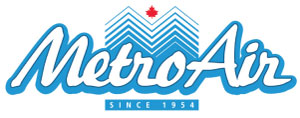Where do you start if your home’s second floor is not as well temperature controlled as downstairs? If your home has forced air heating and cooling, with ductwork throughout, it can be adjusted to provide airflow to manage temperatures. Second floor temperatures are especially vulnerable to insufficient airflow when the HVAC equipment and air handling system are located in the basement. For homes with equipment in the attic instead, the situation can be more complicated.
The Science of Air Balancing is an HVAC Specialty
Air Balancing is a Pinnacle Group HVAC technician service that adjusts the flow of your warm and cool air throughout your house to get comfortable temperatures in every room. It’s performed using extensive experience with home forced air systems, and a knowledge of certain areas of physics. Good air balancing takes into account where the airflow source is located, the layout of the building, and other factors that have a major influence on HVAC results.
Start by Maximizing Your Airflow
A great place to start for many homeowners is to check for unexpected influences on their home’s airflow such as blocked vents. Home insulation and heat-generating equipment in rooms are also important. Improperly set dampers can severely reduce airflow. For those with experience, adjusting the blower fan can help, but also consider setting the “fan” setting on your thermostat to “on” and seeing if constant flow helps.
Budgeting Comfort for Each Room or Floor
Adjusting your home’s airflow is a lot like budgeting your finances. You have a set amount of airflow to work with. The first step should be eliminating unnecessary waste. Then, prioritize your spending and see how the outcome looks for you.
How that translates to HVAC is first considering your air handling system’s maximum output, then looking for reductions like clogged air filters and leaking ducts so you get the most overall airflow. Then make adjustments such as vent settings. Just remember, every time you block or adjust a vent, you increase flow somewhere else.
Obvious and Not-So Obvious Factors for Each Room
A vent doesn’t have to be fully blocked to be ineffective. Curtains hung so they capture a floor vent’s output and keep it near the window can be a major factor. In a carpeted room, look for carpet overhang into the vent space. Don’t forget the air return, which may be placed high or low, and blocked by furniture. Cleaning may help as well. In some rooms, having your HVAC technicians install additional intakes or vents, or a larger size, can help.
Heat-Generating Equipment
Electronics are an obvious example of sources of heat, and you may find others. They can add heat to the room, and even more importantly if they’re near the thermostat they’ll affect how it works. Even large numbers of people gathering in a room can raise the temperature significantly.
Ceiling Fans
If you have ceiling fans, they can help distribute warm or cool air in the room, helping with localized hot or cold spots. Many fans are available with a reversing switch, so you can take hot air that rises to the ceiling and spread it, or pull cold air up for the same effect in summer.
Zoning and Similar Approaches
Some homeowners have separate duct zones and even air handlers installed to separately manage heating and cooling for each floor. There are also automated damper systems available to control vents automatically. Ductless mini-split systems, rather than window or portable AC, are a permanently installed room-by-room solution that is great for nurseries and home offices.
Adjusting Dampers
Located in your duct system, mostly at the joints between main plenum runs and branch ductwork, should be variable doors called dampers. Gently moving the lever to adjust these, often hidden in insulation, can provide a direct way to affect airflow. It can be frustrating, though, so feel free to have us do it.
How the Professionals Get Airflow Right
Airflow management is a science. Our technicians bring with them instruments such as airflow meters, which use a principle similar to the way planes measure their airspeed. They also use sensitive thermometers, and equipment to test air handling equipment. These devices, used with experience and training, can make adjusting your second floor airflow much easier. Give us a call at Pinnacle Group, we’ll be glad to help further!


